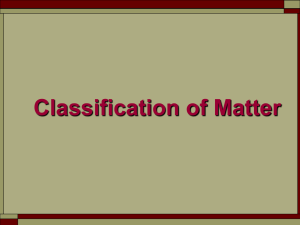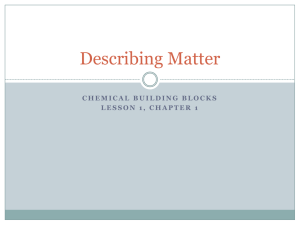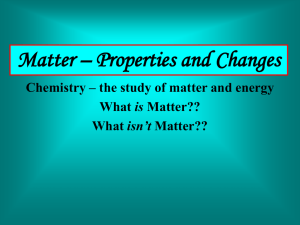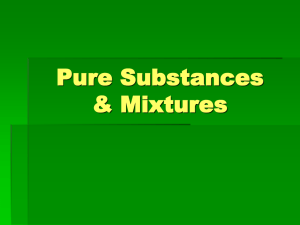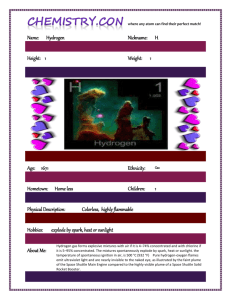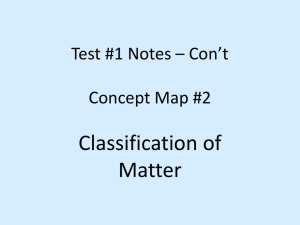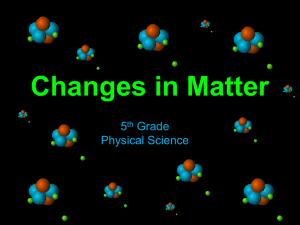Elements, Compounds, and Mixtures
advertisement
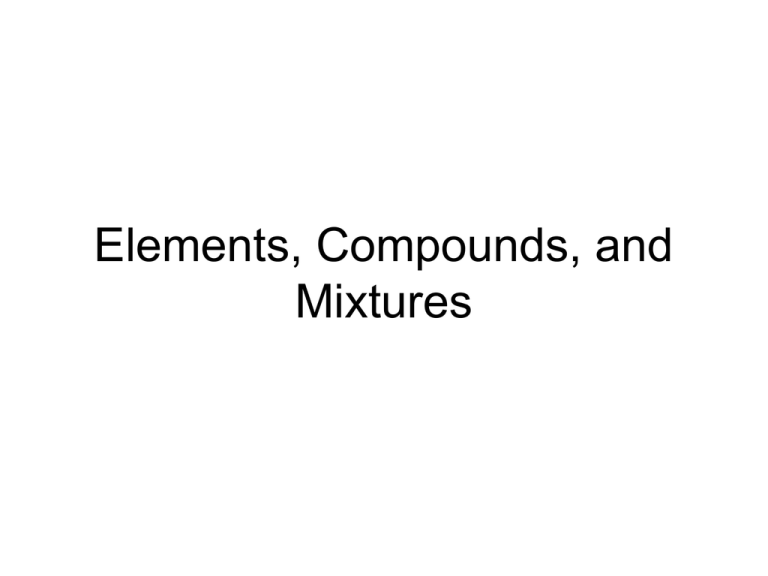
Elements, Compounds, and Mixtures 1. Which of the bottles pictured above contain matter? • All the bottles contain matter. 2. Which of the bottles contain a single pure substance? • Bottles (a) and (b). 3. Explain your answer to question #2. • Pure substances include elements and compounds. 4. How many elements are present in each molecule of water? • Two. 5. What is the ratio of hydrogen atoms to oxygen atoms in a water molecule? • Two hydrogens for each oxygen. 6. As you know, ice is frozen water. What would you expect the ratio of hydrogen atoms to oxygen atoms to be in a molecule of ice? • Two hydrogens for each oxygen. 7. Explain your answer to question #6 • Ice and water are the same substance (H2O) 8. Bottles (c) and (d) both contain mixtures. How are these mixtures similar? • They are both mixtures of hydrogen and oxygen. 9. Bottles (c) and (d) both contain mixtures. How are these mixtures different ? • The amounts of hydrogen and oxygen vary. 10. How can we prove that saltwater is a mixture? • By separating it into salt and water through physical means. Or • By having samples of saltwater that vary in the ratio of salt and water. 11a. Rice Pudding a. Rice Pudding Heterogeneous mixture b. Copper b. Copper Element c. Propane c. Propane C3H8 compound d. Air d. Air Homogeneous Mixture (Solution) e. Magnesium Chloride e. Magnesium Chloride MgCl2 compound f. Mercury f. Mercury Element g. Maple Syrup g. Maple Syrup Homogeneous Mixture (Solution) h. Baking Soda h. Baking Soda NaHCO3 compound i. Chex Party Mix i. Chex Party Mix Heterogeneous mixture j. White Gold j. White Gold An alloy of gold and a white metal such as nickel or palladium Homogeneous Mixture (Solution)


